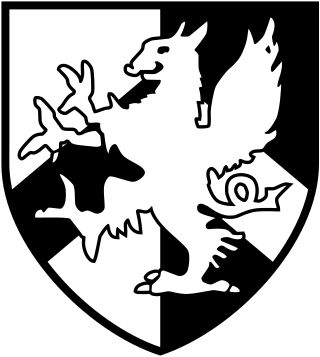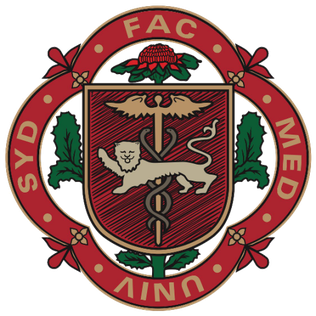
GKT School of Medical Education is the medical school of King's College London. The school has campuses at three institutions, Guy's Hospital (Southwark), King's College Hospital and St Thomas' Hospital (Lambeth) in London – with the initial of each hospital making up the acronymous name of the school. The school in its current guise was formed following a merger with the United Medical and Dental Schools of Guy's and St Thomas' Hospitals on 1 August 1998. As of 2023, the medical school is ranked 10th best worldwide by Times Higher Education, and 5th best in the UK for clinical medicine by the U.S. News & World Report.

The University of Western Australia (UWA) is a public research university in the Australian state of Western Australia. The university's main campus is in Perth, the state capital. UWA was established in 1911 by an act of the Parliament of Western Australia.

Barry James Marshall is an Australian physician, Nobel Prize Laureate in Physiology or Medicine, Professor of Clinical Microbiology and Co-Director of the Marshall Centre at the University of Western Australia. Marshall and Robin Warren showed that the bacterium Helicobacter pylori plays a major role in causing many peptic ulcers, challenging decades of medical doctrine holding that ulcers were caused primarily by stress, spicy foods, and too much acid. This discovery has allowed for a breakthrough in understanding a causative link between Helicobacter pylori infection and stomach cancer.

Barts and The London School of Medicine and Dentistry, commonly known as Barts or BL, is a medical and dental school in London, England. The school is part of Queen Mary University of London, a constituent college of the federal University of London, and the United Hospitals. It was formed in 1995 by the merger of the London Hospital Medical College and the Medical College of St Bartholomew's Hospital.
The Telethon Kids Institute is an Australian medical research institute focused on the prevention of paediatric disease and the development of improved treatments to improve the health and wellbeing of children. Telethon Kids has developed a particular focus on Aboriginal health and has more than 500 staff, post-graduate students and visiting scholars. Telethon Kids is located in the Perth suburb of Nedlands, in the Perth Children's Hospital building. Telethon Kids is an independent not-for-profit, non-government organisation with close affiliations with the University of Western Australia and the Perth Children's Hospital. It is named after the Channel Seven Perth Telethon.

Sir Charles Gairdner Hospital (SCGH) is a teaching hospital in Nedlands, Western Australia.

Royal Perth Hospital (RPH) is a 450-bed adult and teaching hospital located on the northeastern edge of the central business district of Perth, Western Australia.

The Jawaharlal Institute of Postgraduate Medical Education & Research (JIPMER) is a medical school located in Pondicherry, India. JIPMER is an Institute of National Importance (INI) and a tertiary care referral hospital. It is under the direct administrative control of the Ministry of Health and Family Welfare, and Indian Government, with autonomy to run its internal administration.
Aberdeen University School of Medicine, Medical Sciences & Nutrition contains the Medical School and Dental School at the University of Aberdeen in Scotland. It also provides training and carries out research in medical sciences, nutrition, public health, dentistry, health sciences, physician associate studies at BSc, MSc, and PhD levels. The current school was formed from the merger of the former School of Medicine & Dentistry, School of Medical Sciences, and the Rowett Institute of Nutrition.
Ian Jeffrey Constable is an Australian ophthalmologist and the founder and director of the Lions Eye Institute in Perth, Western Australia. He was the Foundation Lions Professor of Ophthalmology at the University of Western Australia, and the Foundation Director of UWA's Centre for Ophthalmology and Visual Science. He is now Patron of the Lions Eye Institute.

The School of Clinical Medicine is the medical school of the University of Cambridge in England. The medical school ranks as 2nd in the world in the 2023 Times Higher Education Ranking, and as 1st in The Complete University Guide, followed by Oxford University Medical School, Harvard Medical School, and Stanford School of Medicine. The Cambridge Graduate Course in Medicine (A101) is the most competitive course offered by the University and in the UK, and is among the most competitive medical programs for entry in the world. The school is located alongside Addenbrooke's Hospital and other institutions in multiple buildings across the Cambridge Biomedical Campus.

The University of Sydney School of Medicine, also known as Sydney Medical School (SMS) is the graduate medical school of the University of Sydney. Established in 1856, it is the first medical school in Australia. In 2018, Sydney Medical School joined the newly formed Faculty of Medicine and Health at the University of Sydney. SMS is ranked 19th in the world and second in Australia in the 2021 QS Subject Rankings for medicine.
The Ian Constable Lecture is an annual lecture given in Perth, Western Australia.
The Monash University Faculty of Medicine, Nursing and Health Sciences is an Australian healthcare provider. It comprises 10 schools, teaching and clinical centers and research institutes. The faculty offers undergraduate, postgraduate and professional education programs in medicine, nursing and allied health, and is a member of the M8 Alliance of Academic Health Centers, Universities and National Academies.

The Michael G. DeGroote School of Medicine, known as the McMaster University School of Medicine prior to 2004, is the medical school of McMaster University in Hamilton, Ontario, Canada. It is operated by the McMaster Faculty of Health Sciences. It is one of two medical programs in Canada, along with the University of Calgary, that operates on an accelerated 3-year MD program, instead of the traditional 4-year MD program.
Christobel Mary Saunders is a British-Australian oncologist and breast cancer specialist, who holds the position of Winthrop Professor of Surgical Oncology at the University of Western Australia.

Svend Peter Klinken is an Australian medical researcher and academic. He is currently the Chief Scientist of Western Australia. He was appointed a Companion of the Order of Australia (AC) in the June 2017 Queen's Birthday Honours.
The Harry Perkins Institute of Medical Research is a medical research centre based in Perth, Western Australia. It has facilities at the Queen Elizabeth II Medical Centre in Nedlands and Fiona Stanley Hospital in Murdoch. The institute was established in 1998 as the Western Australian Institute for Medical Research (WAIMR), and was renamed in 2013 in honour of Harry Perkins, its founding chairman.
The Queen Elizabeth II Medical Centre (QEIIMC), commonly known as just QEII, is a medical campus in Perth, Western Australia, situated in the suburb of Nedlands directly adjacent to Kings Park. It contains Sir Charles Gairdner Hospital, the Perth Children's Hospital, the Harry Perkins Institute of Medical Research, and various smaller facilities.

Michael Joseph John ByrneMBBSBMScRCPFRACPFASCO was a professor and research clinician from Perth, who was responsible for the establishment of medical oncology in Australia.















